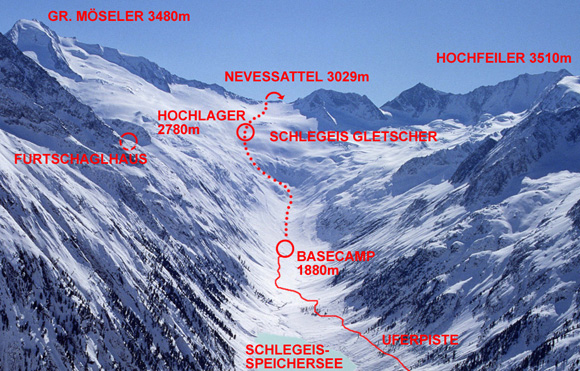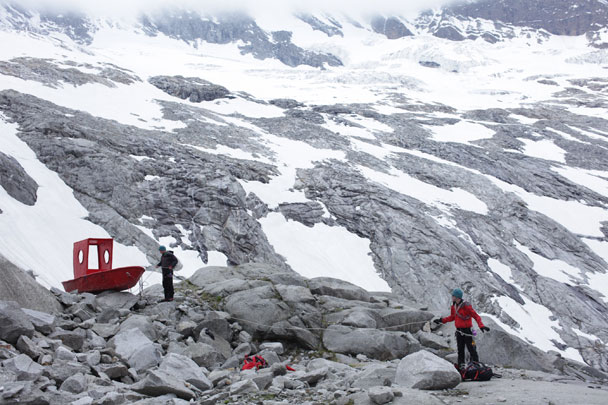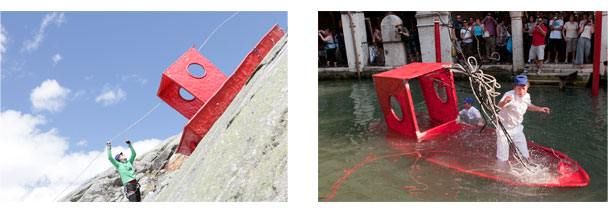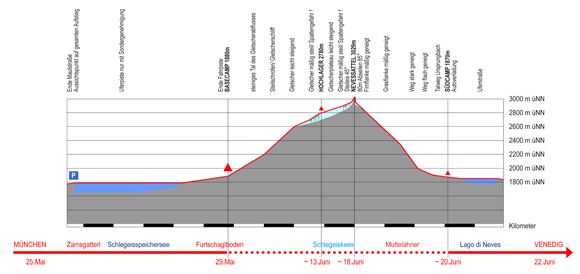passage2011 an actionistic, transalpine drama
The undertaking is driven by hope: bare handed the artists will drag a self-made boat
over the Alps. Neo-romantic aspirations and sisyphean exertion characterize the
mission, whose apparent aim is to launch the boat into the lagoon in time for the
most distinguished art event in the world, the Venice Biennale – to eventually celebrate
the victory of art over nature in a triumphal journey up the Canale Grande or to fail dramatically.
This route is arduous and will physically and mentally demand a great deal even from
the experienced mountaineers.
The major part of the four to five-week expedition will consist in traversing the main
divide of the Alps on foot.
It is projected that the work be integrated into the 2011 Venice Biennale and for it to
be documented there by means of the daily journals entries of the expedition in written
and illustrated form.
A series of photographs will be generated as well as a video work, which will be
presented with the boat.
Following the structure of classic drama, which will either end in apotheosis or in catastrophe,
the piece focuses on the heroes and their actual but also metaphorical undertaking. The art remains central, which is manifested on the one hand in the self-made boat (in the sense of
sculpture), and on the other hand in the act itself. Thereby it is only a metaphor for man's
aspiration to reach beyond his limitations, which can only end – sooner or later – in catastrophe
or salvation.
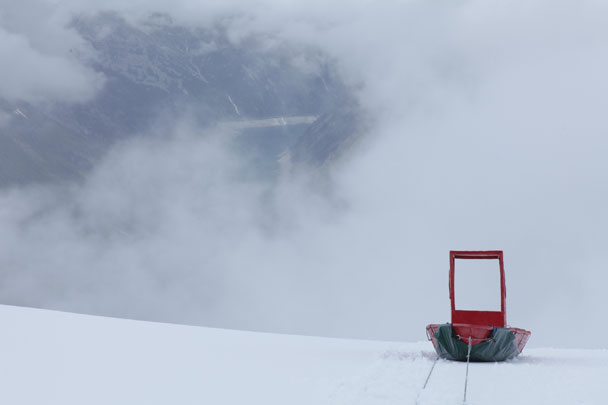
The route
Crafted in a studio in Munich, the boat will be transported on a conventional boat trailer and
a towing vehicle to the Furtschaglboden in the Zillertaler Alps.
From there it will be manually dragged in many challenging steps over the Schlegeis Glacier
up to the Nevessattel pass at an altitude of 3029 m. With its weight of about 180 kg, 5 m
length and 2 m height, the boat can be pulled slowly and with regular breaks by the two
artists up a slight incline. Steeper and more demanding sections have to be traversed by
improvising with "Egyptian" tricks or with pulleys and alpine ropes.The top of the Nevessattel pass marks the crossing
of the main alpine divide and the border into Italy at
the same time.
On the south side the boat has to be abseiled down
80 m vertically and lowered or pulled along moderate
slopes down to the Lappach Valley.
At 1860 m altitude at the Lago di Neves, the boat
will be reloaded onto the trailer and transported on
roads to Venice, where it will be launched into the
sea.
The reference
The work refers in its central storyline to Werner Herzog's film classic "Fitzcarraldo": Here
the plan was to transport a steamship over a mountain, to eventually build an opera house
in the Peruvian Jungle – an allegory for the victory of western culture over primitive nature.
In "Passage", it is the apparently even more absurd act: to transport an ambiguous art-object
cum functional boat to the city of maximum cultural concentration, Venice. In their hubris
and assumptive self-elevation, the two undertakings are comparable with each other, and it
remains to be seen if both likewise fail.
Against this background the work can also be read
as a response to the global economic and ecological
hurdles facing humankind today.
Accordingly, the motif of the glacier that must be
overcome within the framework of this undertaking
stands as a symbolic reference (keyword "climate
change") to the sheer insurmountability of the challenges
that mankind is confronted with, should we wish to
preserve our environment.
28 years after Herzog's film and 130 years after the authentic expedition of Isaias Fermin Fitzcarrald, this interpretation opens new associations on varying semantic layers (like Noah, Sisyphus and Hannibal) to the historical exchange of culture between countries north and south of the Alps, as well as to principal existential aspects of art production. One contemporary issue under examination in this context: the artists see the absurd undertaking as an ironic statement on the prevalent practice in the art world of freighting opulent works of art from art fair to art fair and biennial to biennial, regardless of the hair-raising environmental impact.
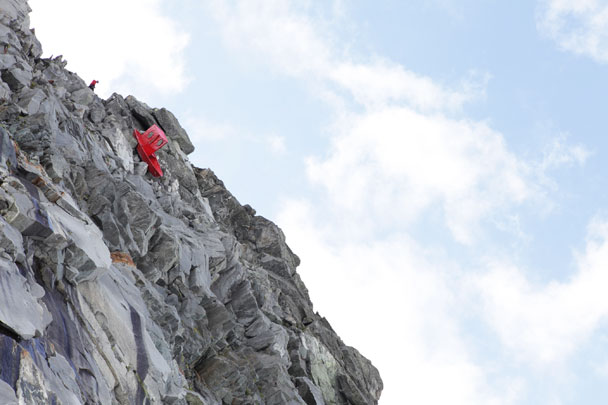
Artists:
GÆG Wolfgang Aichner / Thomas Huber
The artists act on long-standing alpinist experience and on the fascination in both their
commitment to art and mountaineering to cross boundaries.
GÆG stands for "Global Aesthetic Genetics" and is written with the nordic Æ – a reminder
of the shared adventure in an ice storm on the Icelandic glacier Vatnajokull in 1988 which
the two artists only barely survived. They finally teamed up in 2005 and started working on
collaborative projects. Numerous concepts were developed which led to some successful
realizations like "tilia inflata" and "silva inflata" 2005, "freunde" 2006, "werteaustausch" 2006, "inside" 2008 – 2010 and "bunter abend" 2011. Beside art in public spaces, the focus of their
collective practice is on installation, video and action art.
Documentation (film/photography): Matthias Fuchs
Curator:
Christian Schoen
The Phd art historian is a curator and author with
international experience. From 2005 to 2010 he
headed the Center for Icelandic Art as well as acting
as commissary of the Icelandic pavilion at the Venice
Biennale 2007 and 2009. Before this he curated the
Städtische Kunsthalle lothringer13 in Munich (2000
– 2003) and since 2001 he has directed Osram Art
Projects. Schoen lectures at the Universität St.
Gallen and is author of numerous publications in the
fields of historical and contemporary art, new media
art and art in public spaces.
